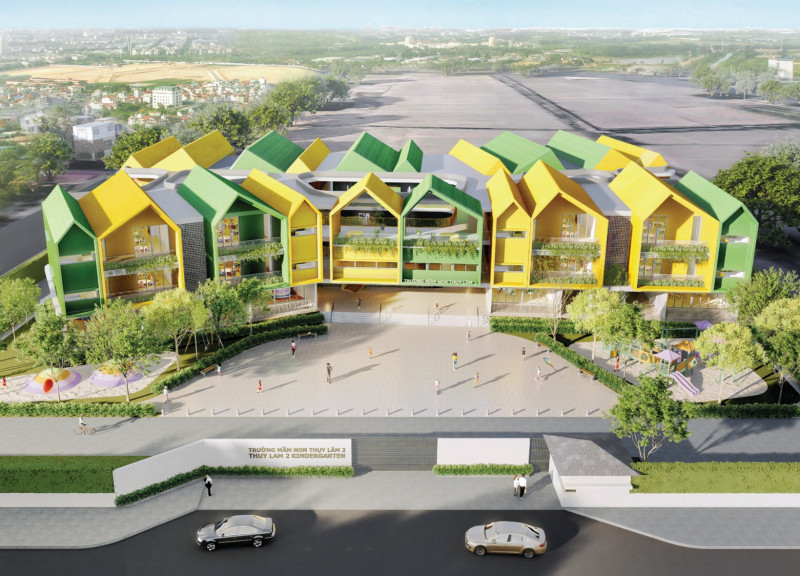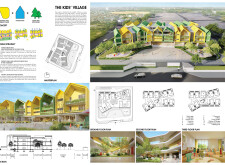5 key facts about this project
### Overview
Located on the outskirts of Hanoi, Vietnam, "The Kids' Village" serves as an educational facility tailored for young children. The design emphasizes modern educational principles, focusing on play, community engagement, and ecological sustainability. The project aims to create a dynamic environment conducive to learning, encouraging interactions that promote social and emotional development.
### Spatial Organization and User Interaction
The design employs a strategic layout that prioritizes shared green spaces, enhancing social interactions among children across different age groups. The extensive playgrounds and gardens situated on the first floor are designed to allow for flexible play and learning experiences, fostering cooperation and engagement in a natural setting. Classrooms are equipped with large windows and effective ventilation systems, ensuring an abundance of natural light and fresh air. This connection to the outdoor environment not only supports educational objectives but contributes positively to children's health and well-being.
### Material Selection and Sustainability
The materials utilized in the project's construction reflect both functionality and aesthetic interests. Concrete provides structural strength, while wood introduces warmth and a natural texture throughout the interiors. Extensive use of glass maximizes natural light and strengthens the connection to the outdoors. Green roofs serve both environmental and practical purposes, enhancing insulation and supporting stormwater management. Non-toxic, vibrant paints have been applied to enrich the learning atmosphere, promoting creativity while ensuring safety. Sustainability is embedded in the project through the choice of materials and design strategies, highlighting a commitment to environmental stewardship and responsible architectural practices.



















































